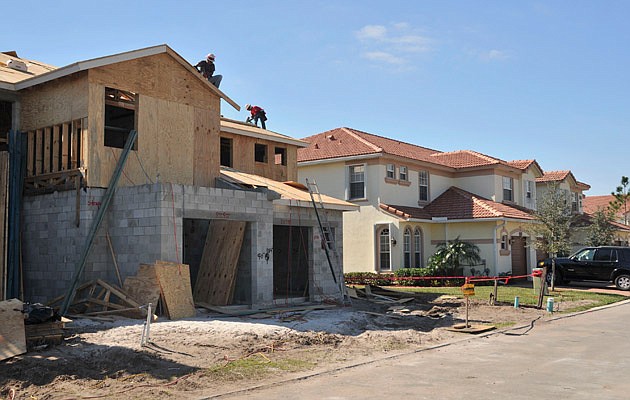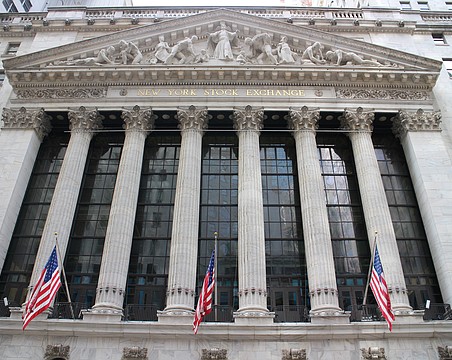The signs of recovery are popping up as U.S. home prices rise. But consumer confidence drops and worries linger.
A gauge of U.S. house prices posted its first monthly gain in three years, providing some solace to consumers shaken by rising joblessness and a stubbornly depressed real estate market.
The S&P/Case-Shiller home-price index rose 0.5% in May from the prior month, the first gain since July 2006 and biggest since May of that year, the group says.
But a Conference Board report showed consumer confidence this month fell more than forecast.
Stabilization of the worst housing market since the 1930s and a rebound in stocks may bring an end this quarter to the record slump in household wealth. Even so, Americans are likely to boost savings and limit spending as unemployment is projected to top 10% by early 2010, restraining any recovery from the deepest recession in five decades.
“The fact that home prices may be finding some semblance of stability is good news that things are not likely to get worse,” says Mark Vitner, a senior economist at Wells Fargo Securities LLC in Charlotte, N.C. “Folks are still concerned about their jobs” and “the loss of housing wealth is going to weigh on consumer spending for years to come.” Stocks fell and Treasury securities rose after the worse- than-projected confidence report.
Less confidence
The Conference Board's confidence index dropped to 46.6, a second consecutive decline, following a reading of 49.3 in June, the New York-based research group says. The figure reached a record low of 25.3 in February.
The S&P/Case-Shiller home-price index was down 17.1% from May 2008, less than projected and the smallest year-over-year drop in nine months.
Economists forecast the index would drop 17.9% from a year earlier, according to the median of 32 projections in a Bloomberg News survey. Estimates ranged from declines of 17.5% to 18.3%.
Compared with a month earlier, 14 cities showed price gains, led by a 4.1% jump in Cleveland and a 1.9% increase in Dallas. The price figures aren't adjusted for seasonal effects, so economists prefer to focus on year-over-year changes. Adjusted for seasonal changes, the index fell 0.2% in May, the smallest monthly decline since February 2007.
Signs of 'bottom'
“If you're looking for a bottom, there's a lot of good stuff here,” Karl Case, an economics professor at Wellesley College and co-creator of the S&P/Case-Shiller index, said on a Bloomberg Radio interview. “If you're looking for a real recovery, it's going to take some time.”
The report buttresses other measures that have shown a deceleration in price declines. The Federal Housing Finance Agency said last week that its purchase-only price index was down 5.6% in May from a year earlier, the smallest annual drop in 10 months.
The FHFA index is a national measure that tracks houses bought with mortgages purchased by Fannie Mae or Freddie Mac and excludes many of the foreclosure sales and properties bought with non-conventional mortgages. In addition to being limited to 20 areas, the S&P/Case-Shiller report also includes distressed properties and those bought with non-conventional loans such as jumbo mortgages.
The Conference Board's measure of present conditions decreased to 23.4 from 25 the prior month, reflecting deteriorating perceptions on job availability. The gauge of expectations for the next six months fell to 62 from 65.5 as Americans grew more pessimistic about jobs and income prospects.
Other measures
Today's figures corroborate other reports. The Reuters/University of Michigan final index of consumer sentiment declined in July for the first time in five months as surging unemployment and stagnant wages shook households.
The economy has lost 6.5 million jobs since the recession began in December 2007, making it the biggest employment slump of any downturn in the last eight decades. Economists surveyed by Bloomberg predict the unemployment rate will exceed 10% by the first quarter of next year from 9.5% in June, the highest level since 1983.
Declines in home prices and stocks cut household net worth by $13.9 trillion through the first quarter, according to figures from the Federal Reserve. The need to rebuild tattered finances has prompted Americans to boost savings.
“We are preparing for this recovery to take a while to pick up steam,” Frits van Paasschen, chief executive officer of Starwood Hotels & Resorts Worldwide Inc., said in a recent conference call with analysts.
Fed Chairman Bernanke said July 22 he cannot “guarantee by any means” that declines in home prices are over “but we have seen a few positive indicators.”
The central bank has established a $1.25 trillion program to purchase securities backed by home loans in an effort to put a floor under the housing market and lower borrowing costs.
Upward
Celanese chief Weidman sees 'clear signs' of
economic recovery.
Celanese Corp. is seeing early signs of a global economic recovery as demand rises for engineered plastics used in automobiles and as housing construction markets stabilize, Chief Executive Officer David Weidman says.
“We were pleasantly surprised by the results from our advanced engineered materials business, where we saw clear signs of economic recovery,” Weidman says. “This is driven principally by increased automotive demand in Europe and in North America.”
Wiedman predicts revenue and profit excluding some costs will improve in the current quarter from the just-ended period at Celanese, the largest producer of acetyls. China is leading global growth, Europe is the weakest region and North America has stabilized, Weidman says.
Second-quarter net income fell 22% to $104 million, or 66 cents a share, from $134 million, or 80 cents, a year earlier, Dallas-based Celanese reported in a statement. Excluding some items, profit was 53 cents a share, topping the 47-cent estimate of eight analysts surveyed by Bloomberg. Sales fell 33% to $1.24 billion.
Volumes at the advanced engineered materials division increased from the first quarter in all regions as customers worked through their stock, the statement says. The unit's sales fell 39% from a year earlier to $184 million.
“We exited the quarter with increasing optimism, although there are still many questions to be answered, particularly about the shape and timing of the global recovery,” Weidman says. “We project global economic conditions for the remainder of 2009 will be similar to the second quarter.”
Celanese shares have more than doubled this year.






